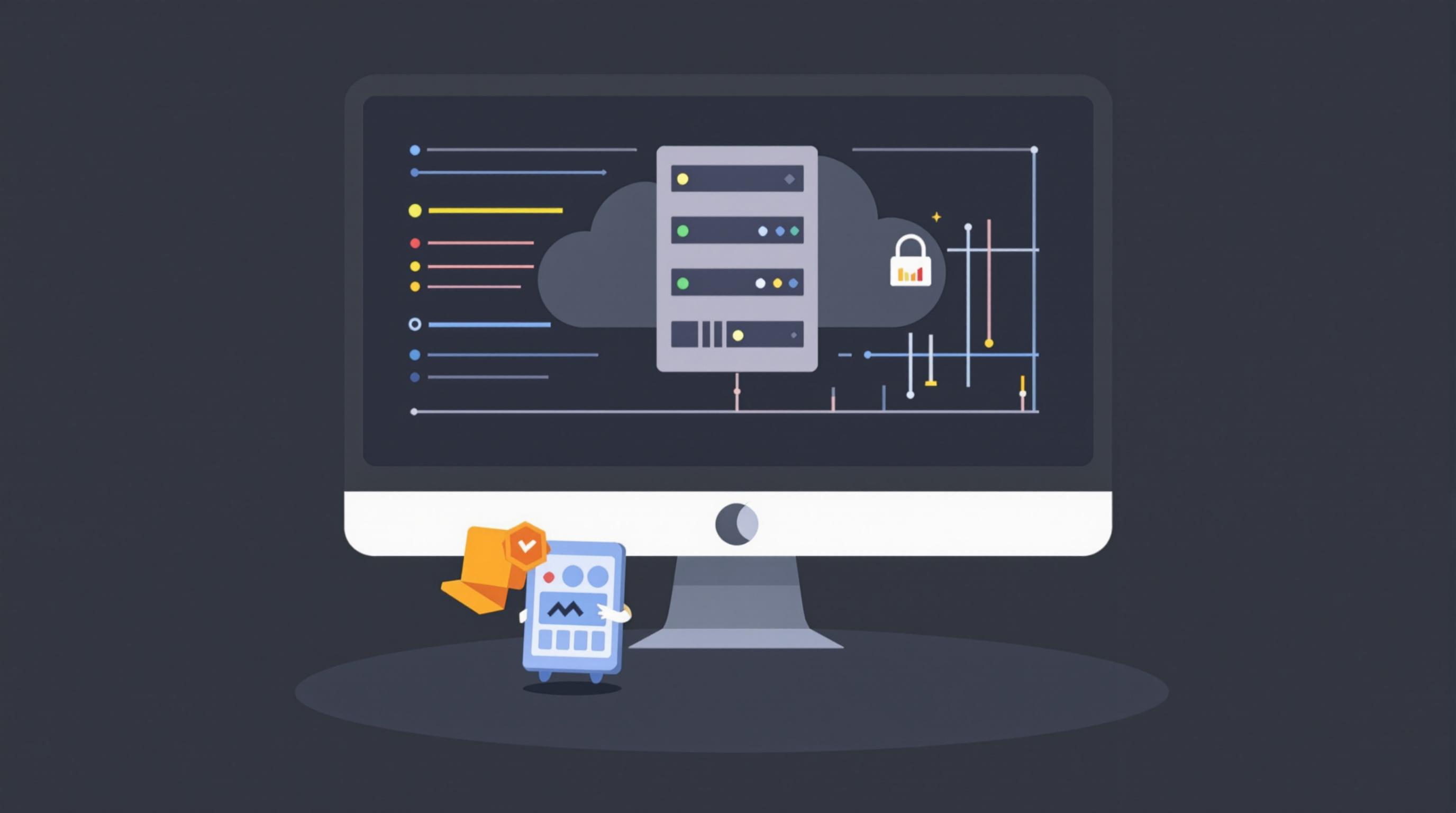Related Articles
- Uncharted Realms: Unveiling Serverless’ Role in Revitalizing Local Economies and Microbusiness Ecosystems
- Unearthing Surprising Synergies: How Serverless Solutions are Reinventing Events and Experiential Marketing Strategies
- Serverless Beyond the Cloud: Unpacking Its Role in Wildfire Management and Ecological Restoration Efforts
- Harnessing Digital Detox: Unplugging to Unleash Creative Energy and Ignite Workplace Performance
- The Surprising Role of Aroma: How Scents Can Unleash Hidden Productivity Boosts in Your Workspace
- Unlocking the Power of Serendipity: How Chance Encounters Can Enhance Team Productivity and Innovation
9 Unseen Metrics in Server Management Tools That Can Enhance Your Capacity Planning and Optimize Resource Allocation Effectively
9 Unseen Metrics in Server Management Tools That Can Enhance Your Capacity Planning and Optimize Resource Allocation Effectively
9 Unseen Metrics in Server Management Tools That Can Enhance Your Capacity Planning and Optimize Resource Allocation Effectively
Introduction to Capacity Planning
Capacity planning is crucial for maintaining the efficiency of server management systems. It involves forecasting future resource requirements to meet varying workloads, thereby ensuring optimal performance. Traditional metrics like CPU usage, memory consumption, and network traffic have been widely used for this purpose. However, they often miss underlying indicators that can significantly influence the success of capacity planning.
This article aims to shine a light on nine unseen metrics that, when integrated into your server management tools, can refine your capacity planning strategies. These metrics will enable you to allocate resources more effectively and avoid potential bottlenecks.
By leveraging these advanced metrics, organizations can enhance their ability to adapt to changing workload demands, reduce downtime, and ultimately save costs associated with over-provisioning or under-provisioning resources.
1. Request Queue Length
The request queue length is an important yet often overlooked metric that indicates the number of requests waiting to be processed. A growing queue length often signals that a server is overwhelmed, leading to slow response times and user dissatisfaction. By monitoring this metric, organizations can identify when to increase the server’s capacity or scale their services.
This data allows for a proactive approach to resource allocation. Rather than waiting for overload situations, administrators can analyze trends and anticipate future demands, allowing them to adjust resources before problems arise.
Integrating request queue length into your server management tools can help prevent performance degradation and ensure that users always experience fast and reliable service.
2. Resource Utilization Drift
Resource utilization drift reflects the discrepancies between expected and actual resource consumption. This metric helps organizations identify if their resources are being underutilized or overutilized. By regularly analyzing this drift, businesses can make more informed decisions about scaling their services and optimizing resource distribution.
By integrating resource utilization drift monitoring into server management tools, organizations can continually align their resources with real-time requirements, minimizing waste and maximizing performance.
3. Latency Metrics
Latency metrics offer insight into the time taken for requests to travel from the client to the server and back. High latency can significantly degrade user experience, making it essential for organizations to monitor this metric closely. Understanding the variations in latency can help pinpoint issues related to server performance and network congestion.
Incorporating latency metrics into capacity planning tools provides valuable feedback on user experience. By identifying peak usage times, administrators can optimize server resources accordingly, ensuring that latency levels remain consistently low.
Moreover, monitoring latency can also help in predicting resource needs geographically, guiding data center placement and redundancy planning.
4. Thread Count
The number of active threads can significantly influence server performance, especially under heavy loads. High thread counts can lead to contention among processes, which may result in performance bottlenecks. Monitoring thread count helps administrators identify thresholds beyond which performance may begin to degrade.
Evaluating thread count can improve decision-making in capacity planning, allowing for adjustments in server configuration to better handle peak loads. Regular assessments can help maintain optimal performance and user experience.
For effective resource allocation, integrating thread count monitoring into server management tools can help identify underperforming workloads early, facilitating corrective actions before critical failures occur.
5. Disk Latency and IOPS
Disk latency and input/output operations per second (IOPS) are crucial for understanding how efficiently storage devices handle data requests. High disk latency can create bottlenecks that hinder overall server performance, affecting everything from application responsiveness to data processing times.
Monitoring these metrics provides insights into storage performance and helps identify when upgrades or adjustments are needed. Tools that analyze disk latency can help determine the right time to scale storage capacity or switch data to faster storage solutions, such as SSDs.
By incorporating disk latency and IOPS into capacity planning, organizations can achieve a more responsive server environment, thereby enhancing user satisfaction and operational efficiency.
6. Connection Metrics
Connection metrics, such as the number of active connections and their success rates, provide insights into user access patterns and potential server strain. Monitoring these metrics allows for greater understanding of traffic loads and spikes, particularly during peak usage times.
By analyzing active connections, server administrators can adjust resources dynamically, scaling up when needed to maintain service quality. This proactive approach can help negate issues associated with sudden traffic surges.
Incorporating connection metrics not only improves resource allocation but also enhances application stability and performance by ensuring uninterrupted service to users.
7. Application Error Rates
Application error rates serve as an indicator of potential problems within server processes or applications. These rates often provide early warning signs of strain on server resources or misconfigurations that could lead to larger issues down the line.
Monitoring application error rates on a continuous basis allows organizations to identify problematic trends and address issues before they escalate, thus maintaining high service levels and improving user satisfaction.
By integrating application error monitoring tools into server management, organizations can enhance overall operational efficiency, ensuring that application performance aligns with user expectations.
8. User Distribution Metrics
User distribution metrics track how users are spread across various servers or applications. Understanding this distribution can help in effective resource allocation, ensuring that no single server is overwhelmed while others remain underutilized.
By analyzing user distribution patterns, businesses can strategically place resources where they are most needed, optimizing overall performance. This metric allows organizations to balance loads across multiple servers and prevent potential bottlenecks.
Incorporating user distribution metrics into capacity planning facilitates a more responsive and resilient server architecture, which can adapt dynamically to user demands.
9. Cost vs. Performance Analysis
A cost vs. performance analysis provides insights into whether the resources being allocated are delivering optimal value. Understanding this relationship is key to achieving efficient resource utilization without overspending.
This analysis can reveal whether investments in additional resources translate into performance improvements, guiding future spending decisions. Regular assessments can help in identifying redundant resources, allowing for budget reallocations to more productive areas.
By integrating a cost vs. performance metric into server management tools, organizations can ensure they are getting the most out of their investments while maintaining operational efficiency.
Conclusion
The integration of these nine unseen metrics into server management tools can significantly enhance capacity planning and optimize resource allocation. By focusing beyond traditional metrics, organizations can gain deeper insights that drive performance and efficiency.
As the demands on servers continue to evolve, staying ahead with proactive measures based on these metrics will be key to maintaining high service levels and user satisfaction.
Incorporating these advanced analytics into your server management practices positions your organization to respond adeptly to future challenges and demands, ensuring a robust and resilient IT environment.




